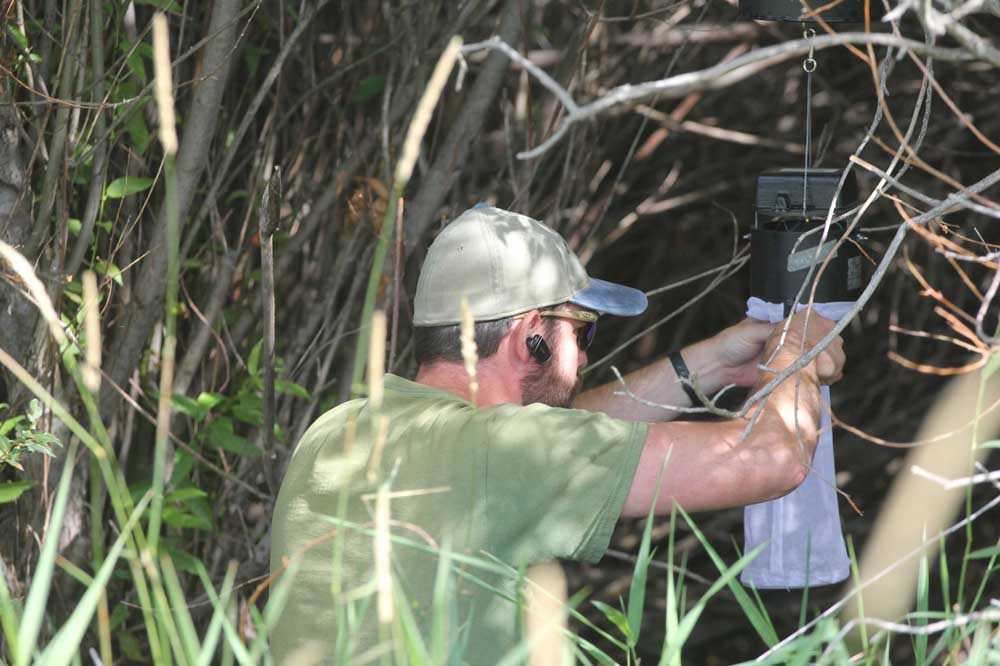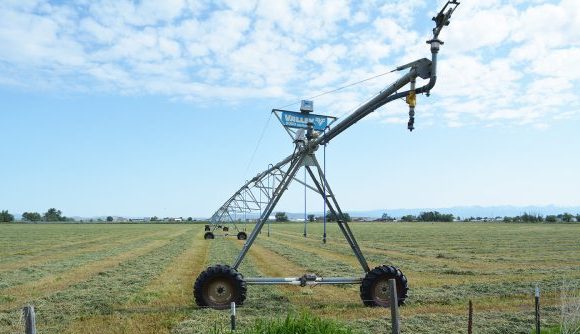West Nile virus detected again in Union County
Published 10:00 pm Friday, August 11, 2023

- Chris Law, Union County Vector Control manager, collects a mosquito trap in Ladd Marsh where West Nile virus had been detected in July 2015. West Nile virus has been detected for the first time in 2023 in Union County and in other locations in Eastern Oregon.
LA GRANDE — West Nile virus has been detected for the first time in Union County this year, the Oregon Health Authority announced this week.
The virus — which is spread by mosquitoes — was detected in two mosquito testing pool sites in the Ladd Marsh wildlife refuge, which is just outside La Grande, and the north end of Elgin, according to a Health Authority press release issued on Tuesday, Aug. 8. Nine other pools within Malheur, Jackson and Baker counties have reported mosquitoes with West Nile virus in 2023.
As of Aug. 8, no humans in Union County have tested positive for the virus, OHA spokesperson in the Public Health Division Jonathan Modie said.
In 2022, mosquitoes with West Nile virus were detected in testing pools around Union County in nine instances, but no humans or animals were reported to have contracted it, according to the OHA database.
The press release encouraged people in Union County to take precautions against mosquitoes to avoid the risk of infection, including preventing mosquito bites. The incubation period is usually two to 14 days. While most infected people show little to no signs of disease, 1 in 5 show signs of West Nile fever.
Symptoms include fever, headache, body aches, joint pains, vomiting, diarrhea or rash. It is important to contact your health care provider if any of these symptoms present themselves, the press release said.
The virus does not spread between humans or from animals to humans.
Though the last reported positive cases of West Nile virus in humans in Union County were in 2007, Modie said people should try to “mosquito-proof” their households.
Modie said that residents should put up mosquito netting to protect their windows or porches; empty water from nearby pots, water dishes or buckets and bird baths; be wary of old tires that can collect water; and get rid of any other stagnant water around their homes.
“Anything where water can pool and make a nice home for mosquito breeding, that’s what we suggest people eliminate,” he said.
Modie also said to be aware of times where mosquitoes are most active: dawn and dusk. If you are outside at these times or will be in mosquito-infested areas, protect yourself by using mosquito repellents containing DEET, oil of lemon eucalyptus or Picardin, and wear long-sleeved shirts and long pants, the press release said.
Emilio DeBess, D.V.M., state public health veterinarian at Oregon Health Authority’s Public Health Division, said high heat combined with sporadic precipitation has created perfect conditions for mosquito growth in recent weeks. As a result, eastern parts of the state are seeing more mosquitoes and a corresponding increase in traps containing West Nile-positive insects.
The increase in mosquito populations may be behind new human cases of the virus.
“Eastern Oregon has seen a little bit of rain, leading to additional water available for mosquitoes to lay eggs,” DeBess said in a Health Authority press release issued Friday, Aug. 11. “We saw an increase of 13 West Nile-positive mosquito pools in one week, 10 of them in Baker County, and two presumptive human cases.”
So far in 2023, a total of 22 mosquito pools, including the two in Union County, have tested positive for the virus. Eleven have been in Baker County, seven in Malheur County, and one each in Jackson and Umatilla counties.
Last year, there were five human West Nile virus cases in Oregon, and three cases among horses, with 45 positive mosquito pools. There also were five human cases in 2021, along with eight horse cases, two bird cases and 75 positive mosquito pools.
Groups at risk for severe disease include adults 50 and older, immunocompromised people and those living with certain conditions such as diabetes and high blood pressure.
Additional resources, such as frequently asked questions and information on finding local mosquito control agencies, are available on OHA’s West Nile virus page and the Centers for Disease Control website. Current and past virus data can be found on the West Nile Virus Activity page.









